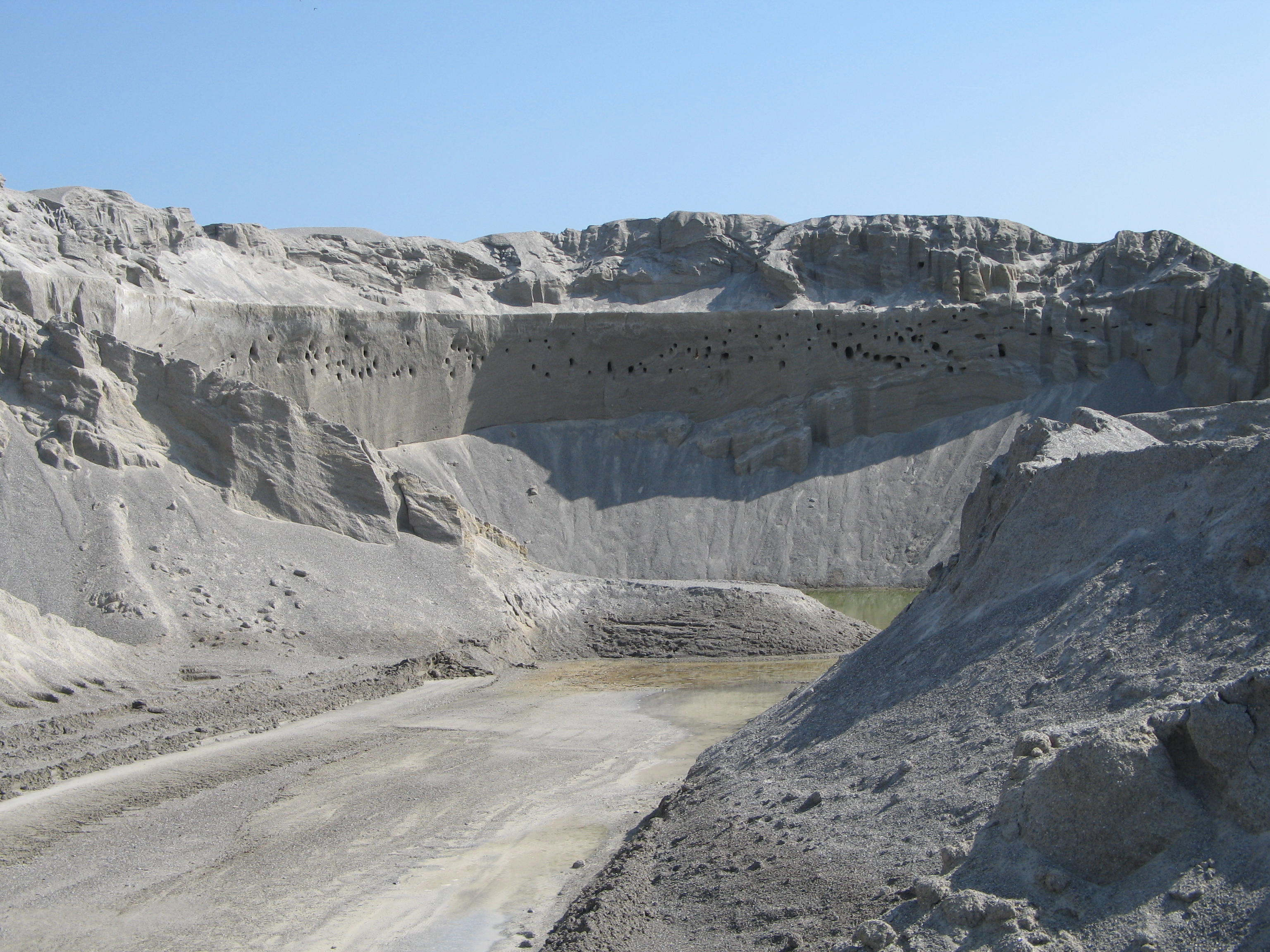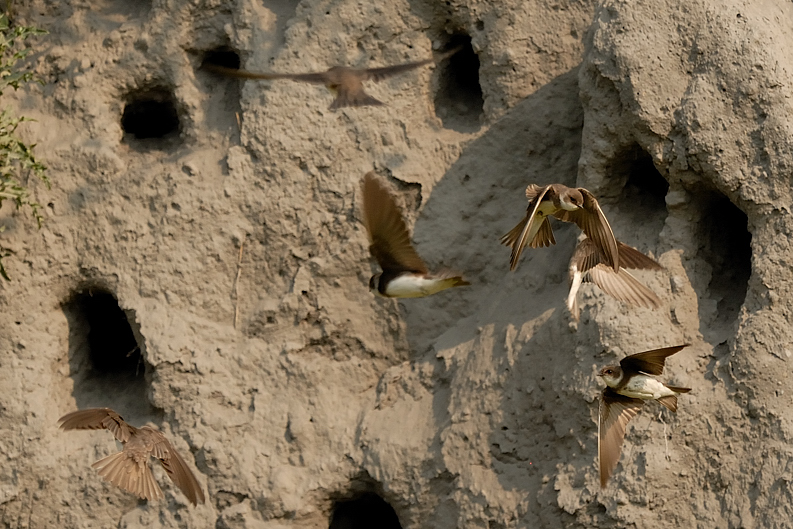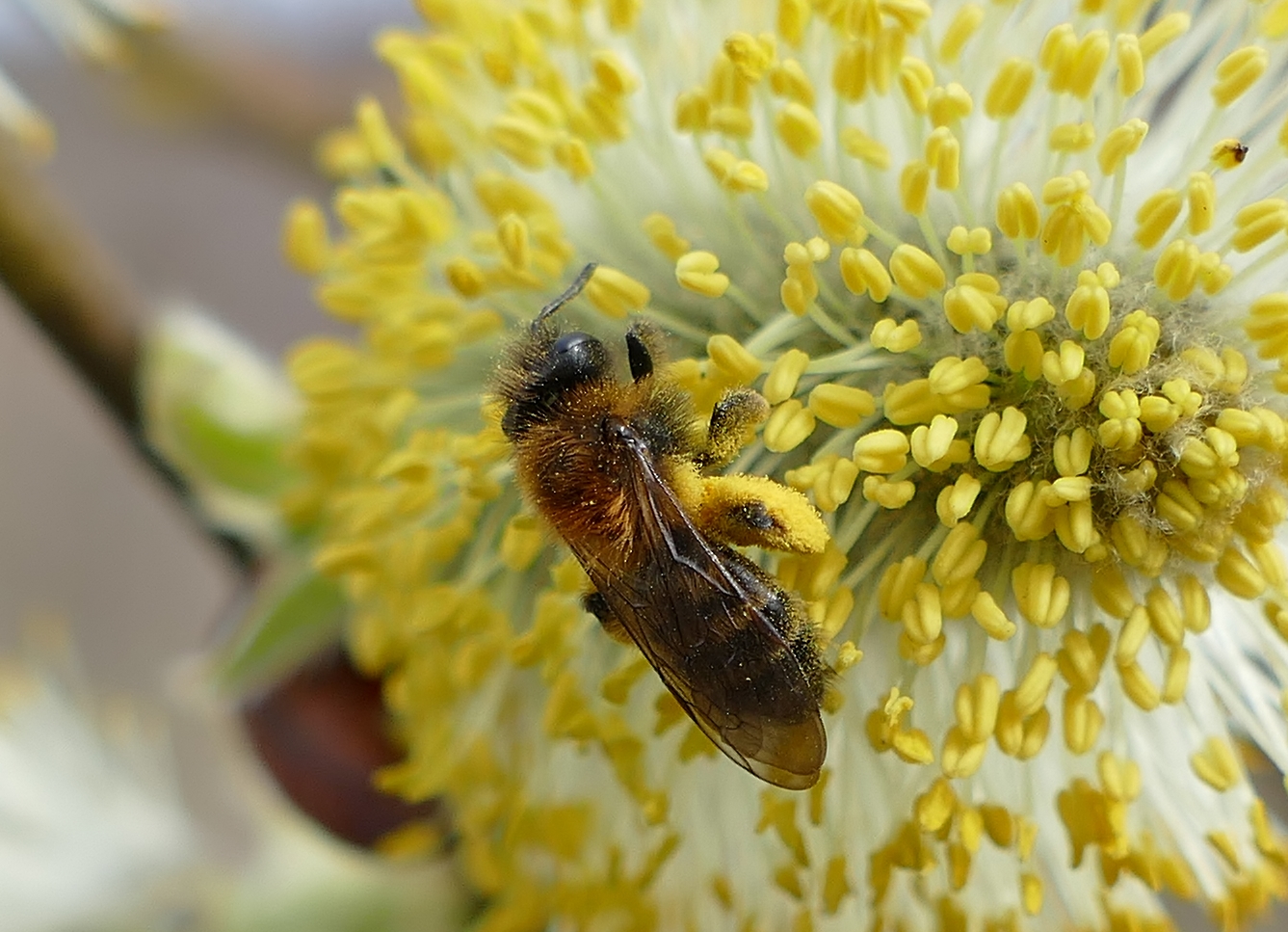By its very nature, extractive activities create heaps of fine and loose materials.
Common in some pits, such habitats can also be found in stockpile areas of hard rock quarries. These cliffs form an ideal environment for the reproduction of sand martin and solitary bees. The Life in Quarries project has created and refreshed cliffs of loose sediment annually to maintain a habitat conducive to the reproduction of these species.
Creation of loose cliffs
Creating a loose cliff from scratch can be expensive. It is therefore more efficient to verticalize an existing stock of movable materials to put them in place. Depending on the target species, the following recommendations should be taken into account.
Sand martin
The verticalization of embankments of loose materials using a mechanical shovel or loader must be done outside the nesting period of sand martin. These loose cliffs can be installed in active quarries as well as in peripheral areas. This species particularly appreciates the location of a cliff at the heart of the activity.
Solitary bees
Solitary bee slopes can be created by scraping the surface of sunny slopes at the edge of the runway. Sandy merlons can also be installed. These merlons can also be used to defend pioneering ponds.
Dynamic management
Naturally, these loose cliffs are colonized by vegetation, or collapse. The development of the vegetation in front of the cliff must be managed. In the event that the cliff collapses during nesting, consideration should be given to reverticalizing the base of the cliff to limit access by predators (marten, fox, etc.). Multi-year management is therefore necessary to maintain the pioneering character and the verticality of the cliffs.
Find out more about this action: https://www.youtube.com/watch?v=q837htWNMhM





